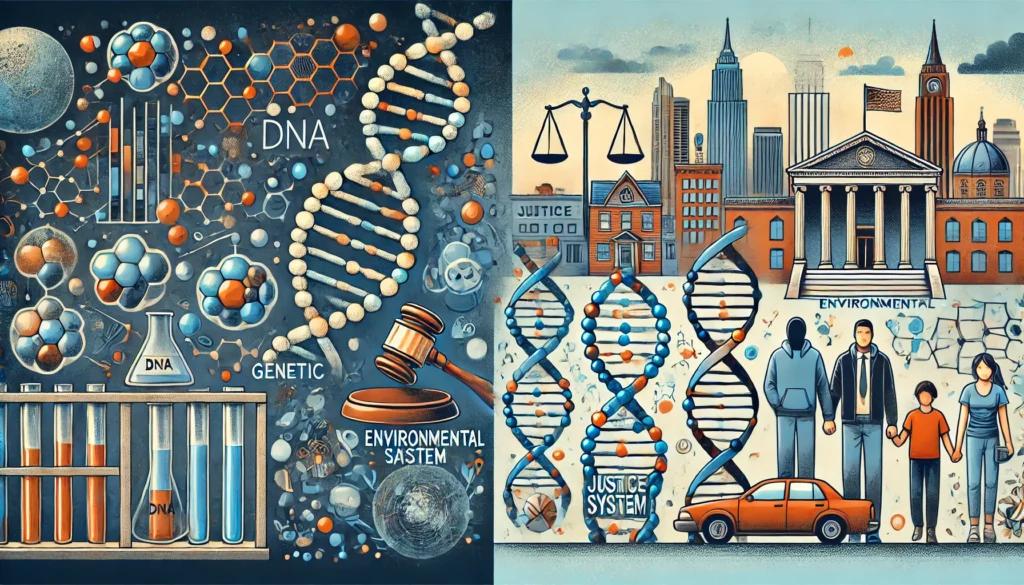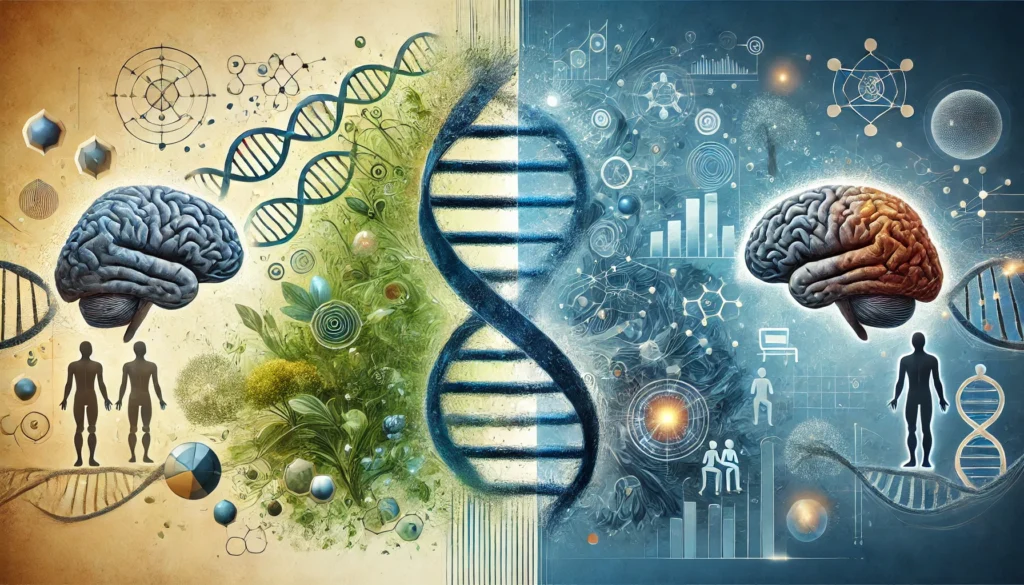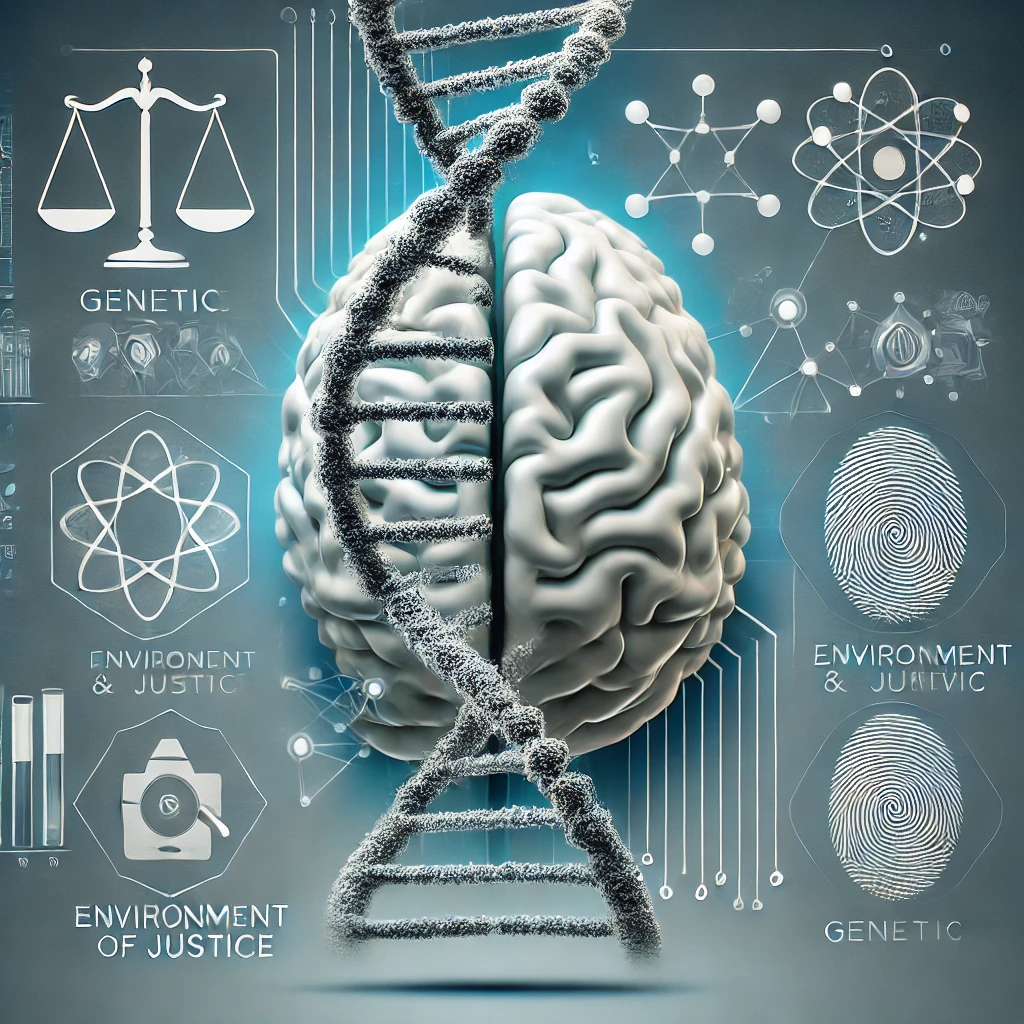Genetic Influences on Criminal Behavior
The exploration of criminal behavior through the lens of genetics has become a significant area of interest in criminology, psychology, and forensic science. The interplay between genetic predispositions and environmental factors is at the core of the debate over why individuals engage in criminal activities. This article delves into the concept of genetic influences on criminal behavior, examining relevant theories, research findings, and implications for understanding and preventing crime.
Introduction to Genetic Influences on Behavior
Behavioral genetics is a field that studies the hereditary factors contributing to individual differences in behavior, including tendencies toward criminal activity. The question of whether genes directly cause criminal behavior or merely predispose individuals to certain traits is a complex and nuanced issue.
While no “criminal gene” has been definitively identified, research suggests that genetic factors may influence traits such as impulsivity, aggression, and risk-taking—characteristics often linked to criminal activity. These genetic predispositions, when combined with adverse environmental influences, can increase the likelihood of criminal behavior.
Historical Background: The Nature vs. Nurture Debate
The nature versus nurture debate has long dominated discussions about human behavior. Early criminological theories leaned heavily toward environmental factors, suggesting that social, economic, and cultural conditions were primary drivers of crime.
However, advancements in genetics have introduced a biological perspective, challenging the assumption that environment alone determines criminal behavior. The integration of genetic and environmental factors into a single framework acknowledges the interplay between innate predispositions and life experiences.
Key Genetic Theories in Criminology
1. The Monoamine Oxidase A (MAOA) Gene
One of the most studied genetic markers in relation to criminal behavior is the MAOA gene, often referred to as the “warrior gene.” This gene is responsible for producing an enzyme that regulates neurotransmitters like dopamine and serotonin, which influence mood and behavior.
Research has shown that individuals with a specific variation of the MAOA gene, particularly when exposed to childhood abuse or trauma, may exhibit higher levels of aggression and violent behavior. This interaction exemplifies how genetic predispositions can be activated by environmental stressors.
2. Twin and Adoption Studies
Twin studies have provided valuable insights into the heritability of criminal behavior. By comparing monozygotic (identical) twins, who share 100% of their genetic material, with dizygotic (fraternal) twins, researchers can estimate the genetic contribution to criminal tendencies.
Adoption studies further support the genetic link by examining individuals raised apart from their biological families. These studies reveal that biological parents with criminal histories are more likely to have offspring who engage in criminal activity, even when raised in non-criminal environments.
3. Polymorphisms and Aggressive Behavior
Polymorphisms, or genetic variations, in certain genes have been associated with aggressive and antisocial behavior. For example:
- DRD2 and DRD4: Variations in dopamine receptor genes may influence impulsivity and reward-seeking behavior.
- 5-HTTLPR: A polymorphism in the serotonin transporter gene has been linked to emotional regulation difficulties, potentially contributing to violent behavior.
Genetic and Environmental Interactions
Genetics alone does not determine criminal behavior. The interaction between genetic predispositions and environmental factors is pivotal. For instance:
- Childhood Environment: Neglect, abuse, and exposure to violence can activate genetic susceptibilities.
- Socioeconomic Factors: Poverty, lack of education, and peer pressure can exacerbate inherited tendencies.
- Parental Influence: A stable and nurturing upbringing can mitigate genetic risks.
These findings emphasize the importance of considering both biological and environmental factors in understanding criminal behavior.

Case Studies and Research Findings
1. The Dunedin Study
The Dunedin Multidisciplinary Health and Development Study followed 1,000 individuals from birth into adulthood. Findings revealed that those with the low-activity MAOA gene variant and a history of childhood maltreatment were significantly more likely to engage in violent crime.
2. The XYY Syndrome Hypothesis
Men with an extra Y chromosome (XYY syndrome) were once thought to be predisposed to aggressive and criminal behavior due to their heightened testosterone levels. However, subsequent research has debunked this oversimplified link, emphasizing the need for multifaceted approaches in genetic studies.
3. Psychopathy and Genetics
Studies on psychopathy, a personality disorder characterized by lack of empathy and impulsivity, suggest a genetic component. Variations in the amygdala and prefrontal cortex, influenced by genetics, may contribute to the development of psychopathic traits.
Ethical and Legal Implications
1. Genetic Determinism vs. Free Will
A critical ethical concern is the potential misuse of genetic research to justify criminal behavior. Arguments rooted in genetic determinism could undermine personal accountability and complicate the legal system’s approach to justice.
2. Discrimination and Stigmatization
Labeling individuals as genetically predisposed to crime raises concerns about discrimination and stigmatization. Ethical guidelines must ensure that genetic research is not used to profile or marginalize specific groups.
3. The Role of Forensic Genetics
The use of genetic information in forensic investigations raises privacy and consent issues. While genetic evidence can identify suspects, it must be handled responsibly to avoid ethical violations.

Implications for Prevention and Rehabilitation
Understanding genetic influences on criminal behavior has significant implications for prevention and rehabilitation strategies:
- Early Intervention: Identifying at-risk individuals through genetic and behavioral screenings can facilitate targeted interventions.
- Personalized Rehabilitation: Tailoring rehabilitation programs based on an individual’s genetic and psychological profile can improve outcomes.
- Education and Support: Providing resources and support to families with a history of criminal behavior can help break the cycle of crime.
Challenges in Genetic Research
Despite advancements, studying the genetic basis of criminal behavior presents several challenges:
- Complexity of Human Behavior: Crime is influenced by numerous factors, making it difficult to isolate genetic contributions.
- Ethical Constraints: Ethical considerations often limit the scope of genetic research.
- Potential for Misinterpretation: Overemphasis on genetic factors can lead to reductive and inaccurate conclusions.
Future Directions in Genetic Criminology
As technology advances, the field of genetic criminology is likely to evolve. Potential areas of focus include:
- Epigenetics: Understanding how environmental factors influence gene expression related to criminal behavior.
- Neurogenetics: Exploring the genetic basis of brain structures and functions associated with crime.
- Integrative Models: Developing comprehensive frameworks that combine genetic, environmental, and psychological factors.
Conclusion
The study of genetic influences on criminal behavior offers valuable insights into the biological underpinnings of crime. However, it is essential to approach this field with caution, recognizing the interplay between genetics and environment and avoiding deterministic interpretations. By integrating genetic research with social and psychological perspectives, we can develop more effective strategies for understanding, preventing, and addressing criminal behavior.







